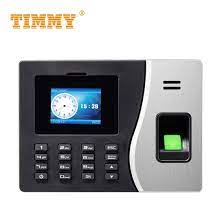Real-time attendance tracking has become an essential tool for organizations looking to efficiently manage their workforce and streamline operations. By leveraging advanced technology and innovative solutions, businesses can now monitor employee attendance in real-time, providing accurate data for better decision-making and improved productivity.
One of the key benefits of real-time attendance tracking is the ability to capture and record employee clock-ins and clock-outs instantly. This eliminates the need for manual entry or paper-based systems, reducing errors and ensuring accurate attendance records. With real-time data at their fingertips, managers can quickly identify attendance patterns, trends, and anomalies, allowing them to address issues promptly and make informed decisions.
Another advantage of real-time attendance tracking is improved transparency and accountability. Employees have access to their own attendance records in real-time, promoting a culture of responsibility and punctuality. Additionally, managers can easily track employee hours worked, overtime, and absences, enabling them to enforce policies consistently and fairly.
Real-time attendance tracking also enhances operational efficiency by automating processes and reducing administrative burden. With automated alerts for late arrivals or early departures, managers can proactively manage workforce scheduling and resource allocation. This not only saves time but also optimizes workforce utilization and improves overall productivity.
Furthermore, real-time attendance tracking offers valuable insights into employee performance and engagement. By analyzing attendance data alongside other key metrics such as productivity levels or project completion rates, organizations can identify high-performing employees, address underperformance issues, and reward top performers accordingly.
In conclusion, real-time attendance tracking is a powerful tool that enables organizations to effectively manage their workforce, boost productivity, enhance transparency, and drive operational efficiency. By investing in innovative solutions that provide accurate real-time data on employee attendance, businesses can stay ahead of the curve in today’s fast-paced work environment.
7 Essential Tips for Effective Real-Time Attendance Management
- Implement a reliable real-time attendance tracking system.
- Ensure that the system can handle multiple check-ins and check-outs seamlessly.
- Train employees on how to use the real-time attendance system effectively.
- Regularly monitor and review attendance data for accuracy and consistency.
- Set clear attendance policies and communicate them to all staff members.
- Address any issues or discrepancies in attendance promptly and fairly.
- Use attendance data to analyze trends and make informed decisions for workforce management.
Implement a reliable real-time attendance tracking system.
To ensure accurate and efficient monitoring of employee attendance, it is crucial to implement a reliable real-time attendance tracking system. By investing in a robust system that captures and records attendance data instantly, organizations can streamline their workforce management processes and make well-informed decisions based on real-time information. A reliable tracking system not only eliminates manual errors but also promotes transparency, accountability, and operational efficiency within the organization. With the right tools in place, businesses can effectively track employee attendance patterns, address issues promptly, and optimize resource allocation for improved productivity and performance.
Ensure that the system can handle multiple check-ins and check-outs seamlessly.
To optimize real-time attendance tracking effectively, it is crucial to ensure that the system can handle multiple check-ins and check-outs seamlessly. This capability allows for accurate recording of employees’ movements throughout the day, accommodating scenarios such as breaks, meetings, or shift changes without any disruptions. By enabling smooth and efficient handling of multiple check-ins and check-outs, organizations can maintain precise attendance records and gain valuable insights into employee activity patterns, ultimately enhancing workforce management and operational efficiency.
Train employees on how to use the real-time attendance system effectively.
To maximize the benefits of real-time attendance tracking, it is crucial for organizations to invest in training programs to educate employees on how to use the system effectively. By providing comprehensive training on the features, functionalities, and best practices of the real-time attendance system, employees can confidently navigate the platform, record their attendance accurately, and troubleshoot any issues that may arise. Training sessions also ensure that employees understand the importance of timely and accurate attendance tracking, promoting a culture of accountability and compliance within the organization. Ultimately, well-trained employees are better equipped to utilize the real-time attendance system to its full potential, leading to improved data accuracy, streamlined processes, and enhanced workforce management.
Regularly monitor and review attendance data for accuracy and consistency.
Regularly monitoring and reviewing attendance data for accuracy and consistency is crucial in ensuring effective real-time attendance tracking. By regularly checking the data, organizations can identify any discrepancies or errors promptly and take corrective actions as needed. This practice helps maintain the integrity of attendance records, enabling managers to make informed decisions based on reliable information. Consistent monitoring also allows for the detection of any patterns or trends in employee attendance, helping to address potential issues before they escalate. Overall, regular review of attendance data is essential for optimizing workforce management processes and promoting a culture of accountability within the organization.
Set clear attendance policies and communicate them to all staff members.
Setting clear attendance policies and effectively communicating them to all staff members is crucial for successful real-time attendance tracking. Clear policies help establish expectations regarding punctuality, working hours, break times, and reporting procedures, ensuring that employees understand what is required of them. By transparently outlining the consequences of non-compliance with attendance policies, organizations can promote accountability and foster a culture of responsibility among their workforce. Regular communication and reinforcement of these policies help maintain consistency and fairness in attendance management, ultimately contributing to a more efficient and productive work environment.
Address any issues or discrepancies in attendance promptly and fairly.
It is crucial for organizations implementing real-time attendance tracking to address any issues or discrepancies in attendance promptly and fairly. By taking swift action to investigate and resolve discrepancies, businesses can maintain the integrity of their attendance data and uphold accountability within the workforce. Fairly addressing attendance issues also helps in fostering a culture of transparency and trust among employees, ensuring that policies are applied consistently and equitably. Proactive management of attendance discrepancies not only enhances operational efficiency but also contributes to a positive work environment where employees feel valued and respected.
Use attendance data to analyze trends and make informed decisions for workforce management.
Utilizing attendance data to analyze trends and make informed decisions for workforce management is a strategic approach that can yield significant benefits for organizations. By closely examining patterns in employee attendance, such as recurring late arrivals or frequent absences, managers can identify underlying issues and proactively address them. This data-driven insight allows for better workforce planning, resource allocation, and performance management. Ultimately, leveraging attendance data to inform decision-making not only improves operational efficiency but also enhances employee productivity and engagement.



